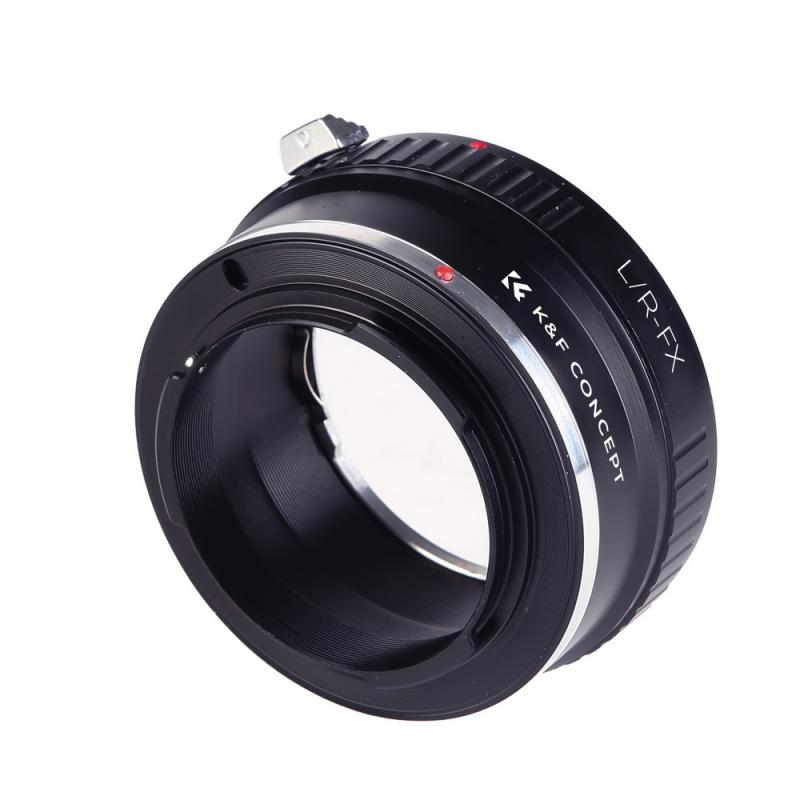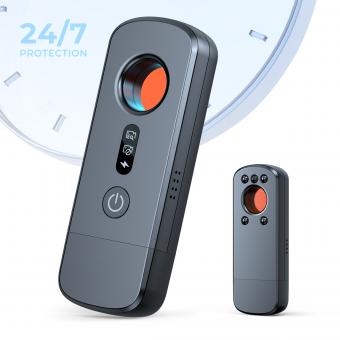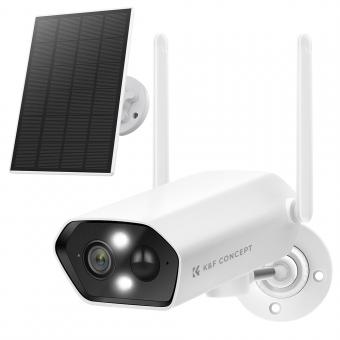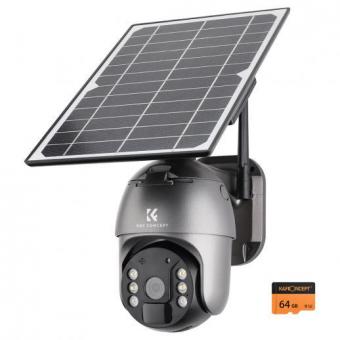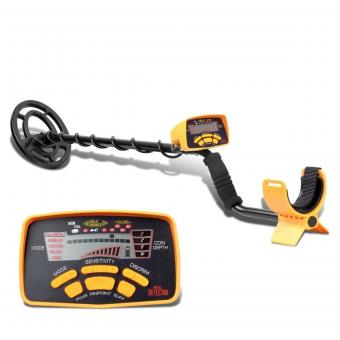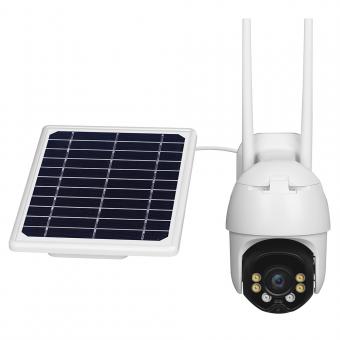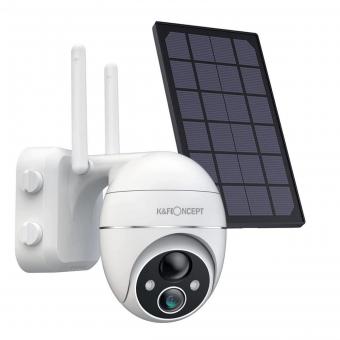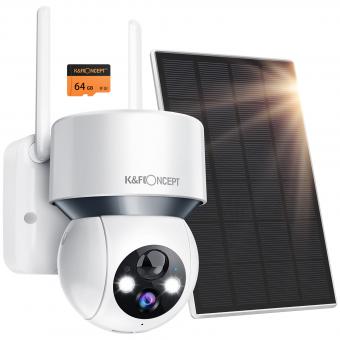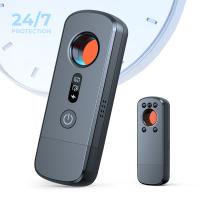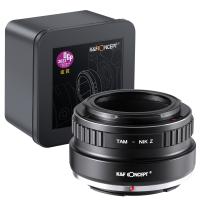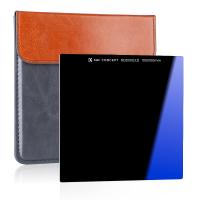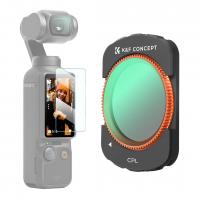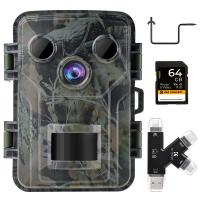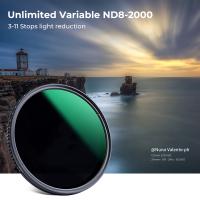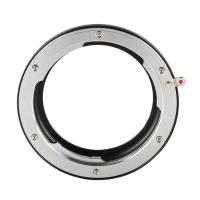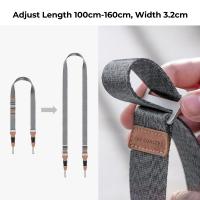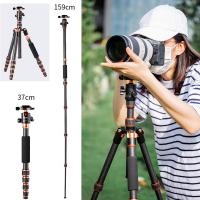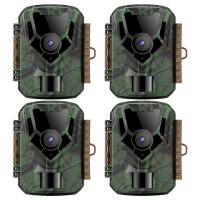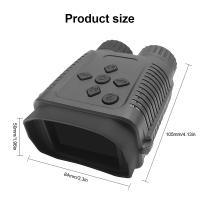How To Detect A Hidden Security Surveillance Camera ?
To detect a hidden security surveillance camera, you can use various methods. One common approach is to visually inspect the area for any unusual or out-of-place objects that could potentially be a hidden camera. Look for small lenses or pinhole openings that may indicate the presence of a camera. Additionally, you can use a flashlight to scan the room and check for any reflections that might be coming from a camera lens.
Another method is to use a wireless signal detector or a bug detector. These devices can help you identify the presence of wireless cameras by detecting the radio frequency signals they emit. They can also detect other types of surveillance devices, such as audio bugs or GPS trackers.
Lastly, you can consider using a smartphone app that is designed to detect hidden cameras. These apps use the phone's camera and infrared sensors to scan the surroundings and identify any hidden cameras.
It's important to note that while these methods can be helpful in detecting hidden cameras, they are not foolproof. Some hidden cameras may be very well concealed and difficult to detect. If you have concerns about privacy or suspect the presence of hidden cameras, it may be best to consult with a professional security expert.
1、 Visual Inspection Techniques for Hidden Surveillance Cameras
Visual Inspection Techniques for Hidden Surveillance Cameras
Detecting hidden security surveillance cameras can be a challenging task, but with the right techniques, it is possible to uncover them. Visual inspection is one of the most effective methods to detect hidden cameras, and here are some techniques to help you identify them:
1. Look for unusual or out-of-place objects: Hidden cameras are often disguised as everyday objects such as smoke detectors, wall clocks, or even electrical outlets. Pay close attention to any objects that seem out of place or are positioned in a way that provides an unusual view of the room.
2. Check for small holes or lenses: Hidden cameras usually have small lenses that capture video footage. Inspect the room carefully, focusing on areas where cameras could be discreetly placed, such as corners, ceilings, or behind objects. Look for tiny holes or lenses that may indicate the presence of a hidden camera.
3. Use a flashlight: Shine a flashlight around the room to look for reflections. Hidden camera lenses often reflect light differently than regular objects, making them easier to spot. Move the flashlight around the room at different angles to increase your chances of detecting any hidden cameras.
4. Look for wires or cables: Some hidden cameras require power or a connection to transmit the recorded footage. Check for any suspicious wires or cables that may lead to an unexpected location, such as behind furniture or walls.
5. Utilize a camera detector: There are devices available that can help detect hidden cameras by picking up their radio frequencies or infrared signals. These detectors can be particularly useful in identifying wireless cameras that may not be easily visible.
It is important to note that as technology advances, hidden surveillance cameras may become more sophisticated and harder to detect. Therefore, staying updated on the latest advancements in surveillance technology and regularly checking for new detection techniques is crucial.
In conclusion, visual inspection techniques are essential for detecting hidden security surveillance cameras. By being observant, looking for unusual objects, checking for small holes or lenses, using a flashlight, looking for wires or cables, and utilizing camera detectors, you can increase your chances of uncovering hidden cameras. However, it is important to stay informed about the latest advancements in surveillance technology to ensure you are equipped with the most effective detection methods.
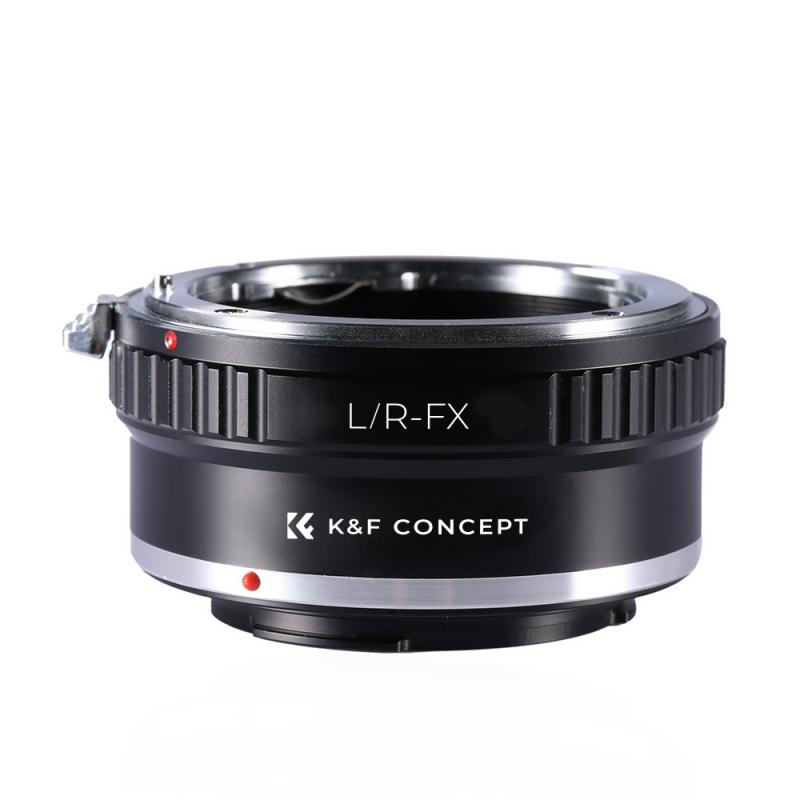
2、 Infrared Detection Methods for Hidden Security Cameras
Infrared Detection Methods for Hidden Security Cameras
Detecting hidden security cameras can be a challenging task, but one effective method is through infrared detection. Infrared (IR) detection relies on the fact that most security cameras emit infrared light, which is invisible to the human eye but can be detected using specialized equipment. Here are some methods for detecting hidden security cameras using infrared technology:
1. Infrared Cameras: Using an infrared camera or a smartphone with an infrared camera attachment can help you identify hidden security cameras. These cameras can detect infrared light emitted by security cameras, making them visible on the camera's screen.
2. Infrared Scanners: Infrared scanners are devices specifically designed to detect infrared light. They can be used to scan a room or an area and identify any sources of infrared radiation, which could indicate the presence of a hidden security camera.
3. Infrared Detectors: Infrared detectors are handheld devices that can detect infrared light. By scanning the area with an infrared detector, you can identify any hidden security cameras that emit infrared radiation.
4. Infrared Filters: Some security cameras use infrared filters to block visible light and only capture infrared light. By using an infrared filter on your smartphone's camera, you can check if any hidden security cameras are emitting infrared light.
5. Wireless Signal Detectors: Hidden security cameras often transmit their footage wirelessly. Using a wireless signal detector, you can scan for any wireless signals in the area, which could indicate the presence of a hidden camera.
It is important to note that technology is constantly evolving, and so are the methods used by hidden security cameras. Some cameras may use advanced techniques to avoid detection, such as using low-power infrared LEDs or hiding the camera lens behind one-way mirrors. Therefore, it is crucial to stay updated with the latest advancements in infrared detection technology and consult professionals if needed.
In conclusion, infrared detection methods can be effective in detecting hidden security cameras. However, it is important to use specialized equipment and stay informed about the latest advancements in order to stay one step ahead of those who may be trying to invade your privacy.
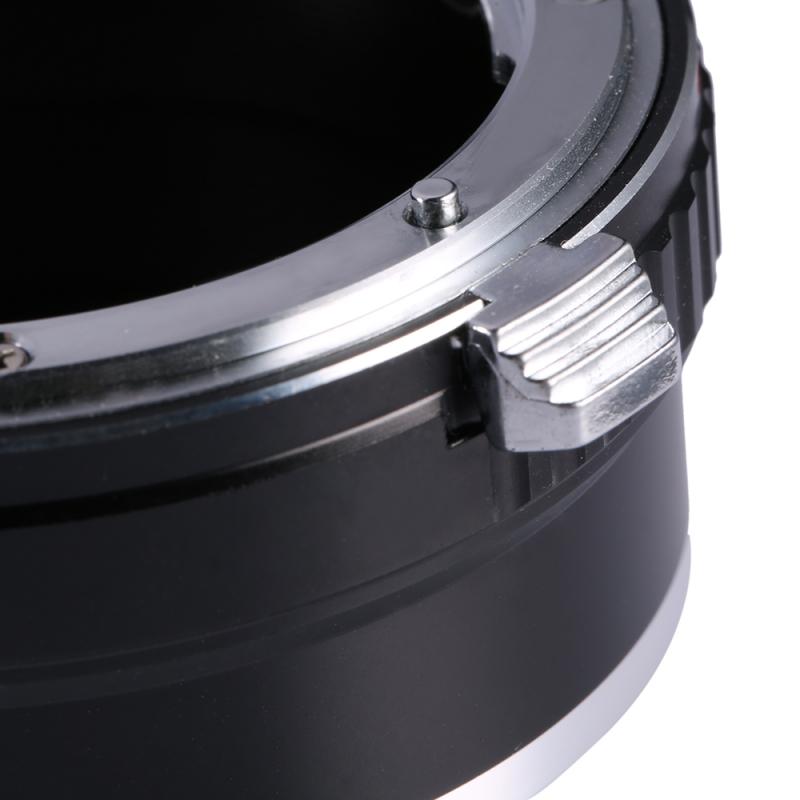
3、 Radio Frequency (RF) Scanning to Detect Hidden Surveillance Cameras
One effective method to detect hidden security surveillance cameras is through Radio Frequency (RF) scanning. RF scanning involves using a device that can detect and analyze radio frequencies emitted by wireless devices, including hidden cameras.
Hidden surveillance cameras often use wireless technology to transmit the captured footage to a receiver or storage device. These cameras emit radio frequencies as they transmit the video signal, which can be detected by an RF scanner. By scanning the area with an RF scanner, you can identify any unusual or suspicious radio frequency signals that may indicate the presence of a hidden camera.
RF scanning devices are portable and easy to use. They typically display a list of detected radio frequencies, allowing you to identify any signals that are not associated with known devices in the area. Some advanced RF scanners even provide visual or audio alerts when they detect a suspicious signal.
It is important to note that RF scanning is not foolproof and may not detect all hidden cameras, especially those that do not use wireless technology. Additionally, advancements in camera technology have led to the development of hidden cameras that emit very low or no radio frequency signals, making them harder to detect using RF scanning alone.
To enhance your chances of detecting hidden surveillance cameras, it is recommended to combine RF scanning with other methods such as physical inspection, using a flashlight to search for camera lenses, or using a camera detector device that can detect the reflection of camera lenses.
In conclusion, RF scanning is a useful tool for detecting hidden security surveillance cameras that use wireless technology. However, it is important to employ multiple detection methods to increase the chances of finding hidden cameras, as technology continues to evolve and cameras become more sophisticated.
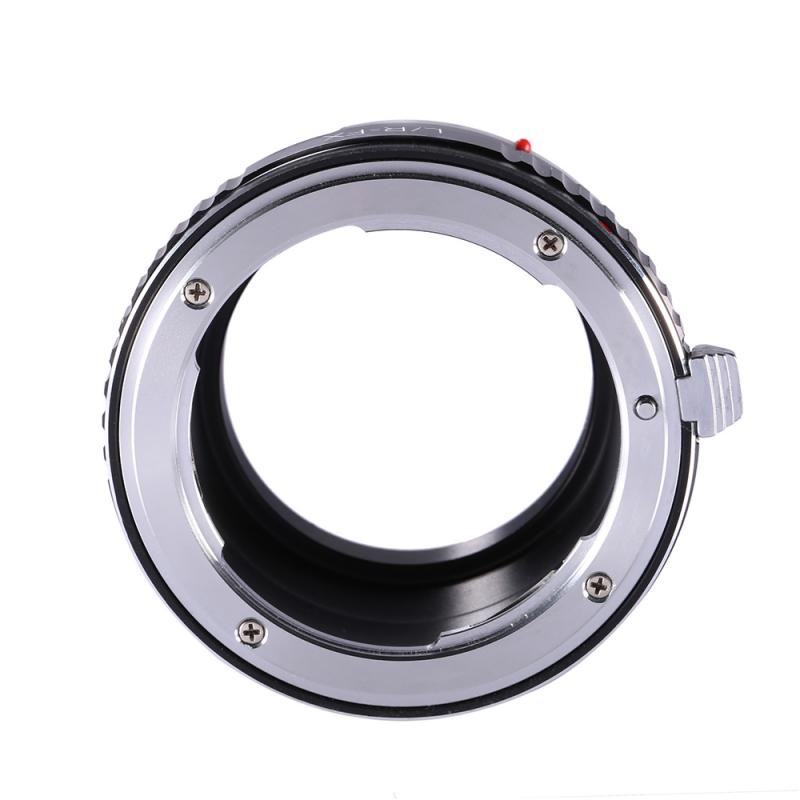
4、 Thermal Imaging for Identifying Hidden Security Cameras
Thermal Imaging for Identifying Hidden Security Cameras
One effective method for detecting hidden security surveillance cameras is through the use of thermal imaging technology. Thermal imaging cameras can detect the heat signatures emitted by electronic devices, including hidden cameras. This technology has been widely used in various industries, including law enforcement and security, and has proven to be highly effective in identifying hidden objects.
Thermal imaging cameras work by detecting the differences in temperature between objects and their surroundings. When a hidden camera is in operation, it generates heat due to the electrical components and the camera lens. This heat signature can be detected by a thermal imaging camera, making it an excellent tool for identifying hidden security cameras.
Using a thermal imaging camera to detect hidden cameras has several advantages. Firstly, it allows for quick and efficient scanning of a room or area, as the camera can detect heat signatures from a distance. This saves time and effort compared to manually searching for hidden cameras. Additionally, thermal imaging cameras can detect cameras that are hidden behind objects or walls, as they can detect the heat emitted through these barriers.
It is important to note that while thermal imaging technology is highly effective in detecting hidden security cameras, it is not foolproof. Some hidden cameras may be designed to minimize heat emissions, making them harder to detect using thermal imaging alone. Therefore, it is recommended to use thermal imaging in conjunction with other detection methods, such as visual inspection or radio frequency scanning, for a more comprehensive approach.
In conclusion, thermal imaging technology is a valuable tool for identifying hidden security surveillance cameras. Its ability to detect heat signatures emitted by electronic devices, including hidden cameras, makes it an effective and efficient method. However, it is important to use thermal imaging in combination with other detection methods to ensure a thorough search for hidden cameras.
